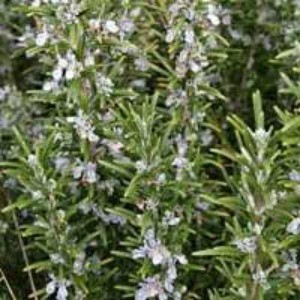
Rosmarinus officinalis
Rosemary
Rosemary is an important culinary herb and should be included in every herb garden. Besides Rosemary's many culinary and medicinal properties and its many household uses, its trusses of blue flowers nestled among pine needle-like leaves are an attractive ornamental shrub for perennial borders and beds. Rosemary grows tall and erect or bushy and compact depending on the variety.
tender perennial
full sun or partial shade
Start plants with cuttings taken from non-flowering branches in the early summer or layer and relocate seedlings from established plants. To sow from seed, select a well-protected site with loamy, well-drained soil and full sun exposure. Keep plants compact in size with regular trimming. Rosemary is a long-lived perennial in warmer climates. Northern gardeners can grow it in containers that can be easily brought indoors in the winter.
cuttings
leaves
Rosemary leaves can be harvested anytime. They should only be used fresh, so harvest only what you can use at any one time.
digestive problems; muscle relaxant; diuretic; menstrual cramps; nervousness; memory stimulant
bouquet garnish; roasted meats; potatoes; vinegars
skin care; hair care; soap; posies, wreaths and crafts; potpourri

About The Author: Ellen Brown is an environmental writer and photographer and the owner of Sustainable Media, an environmental media company that specializes in helping businesses and organizations promote eco-friendly products and services.
Add your voice! Click below to comment. ThriftyFun is powered by your wisdom!